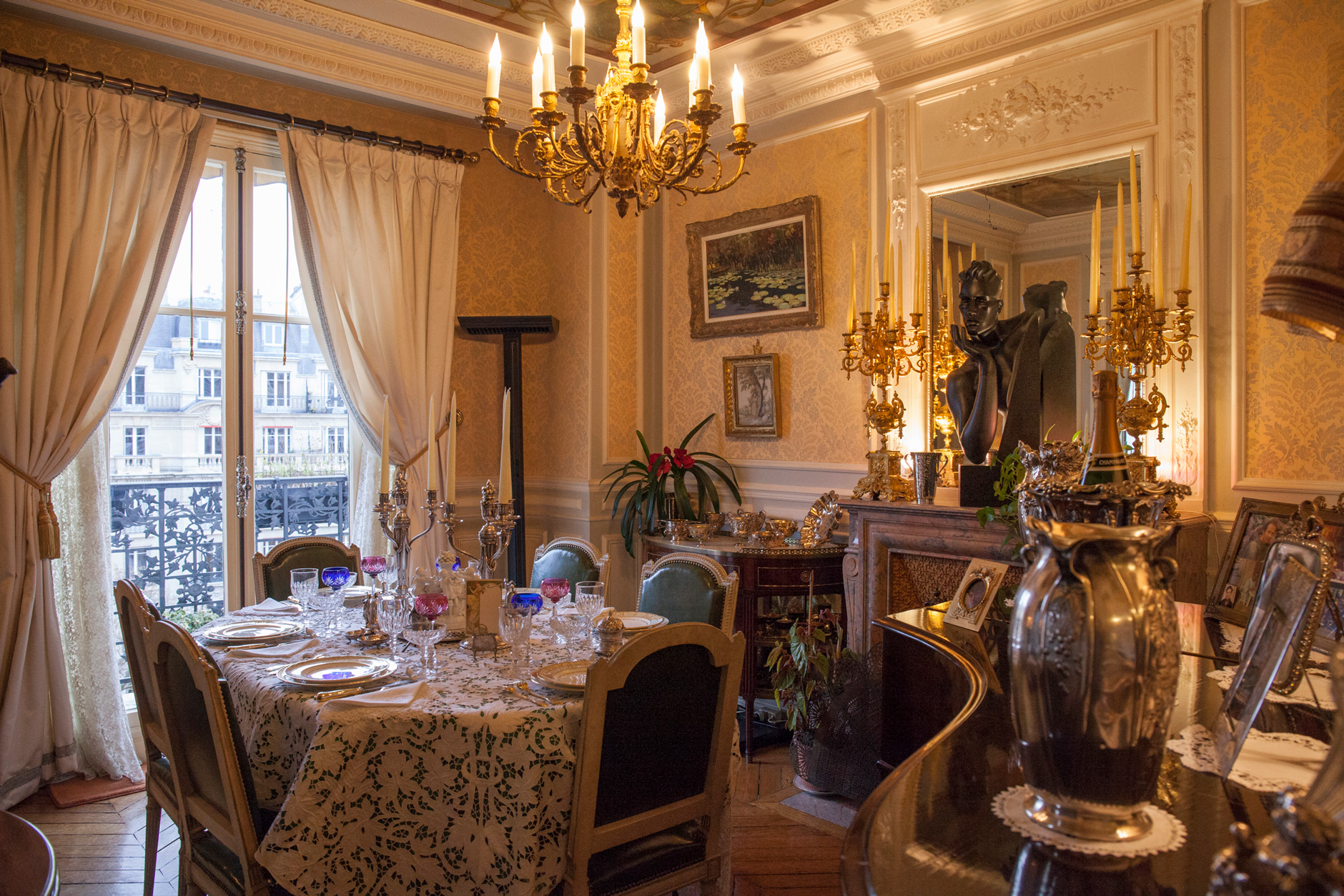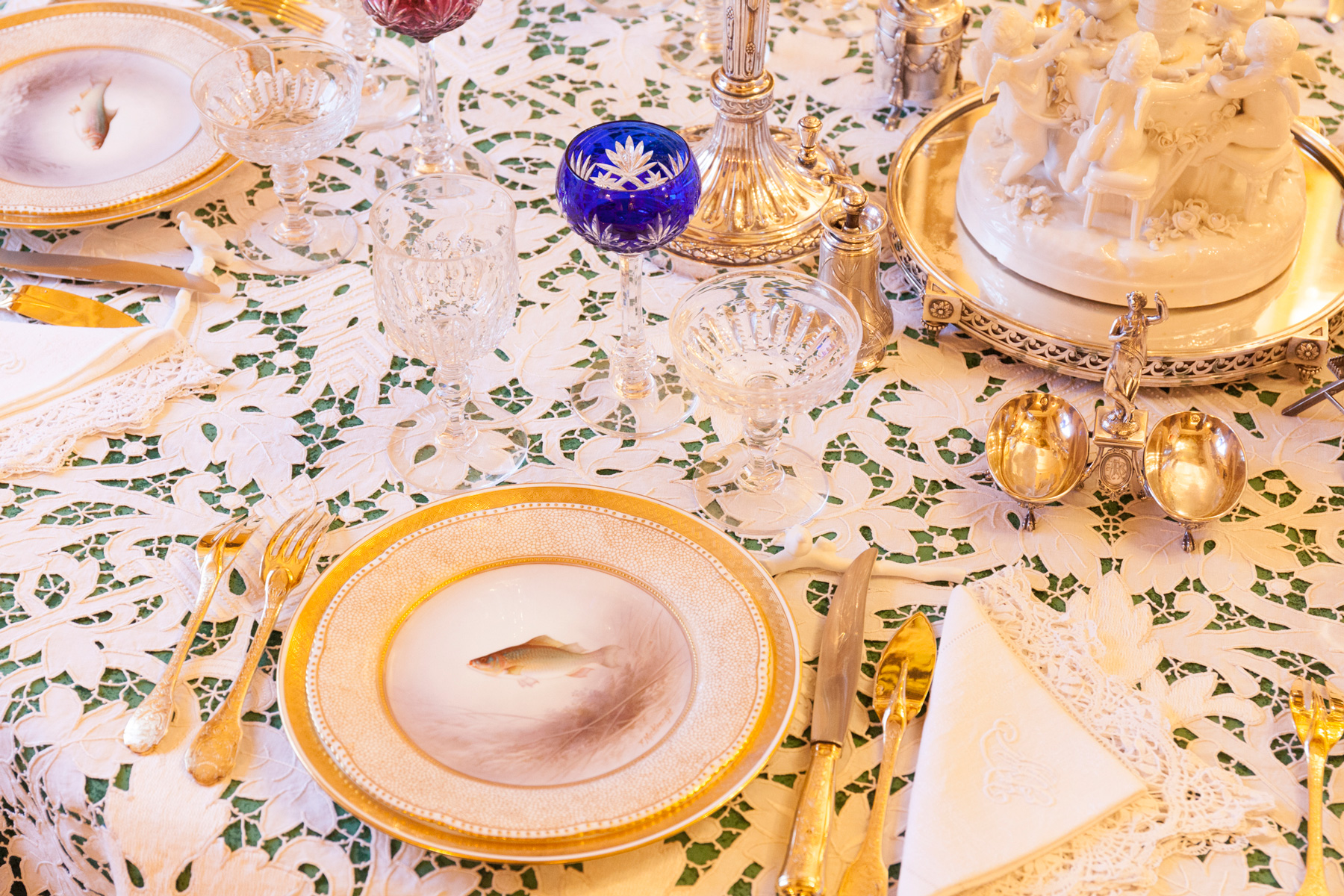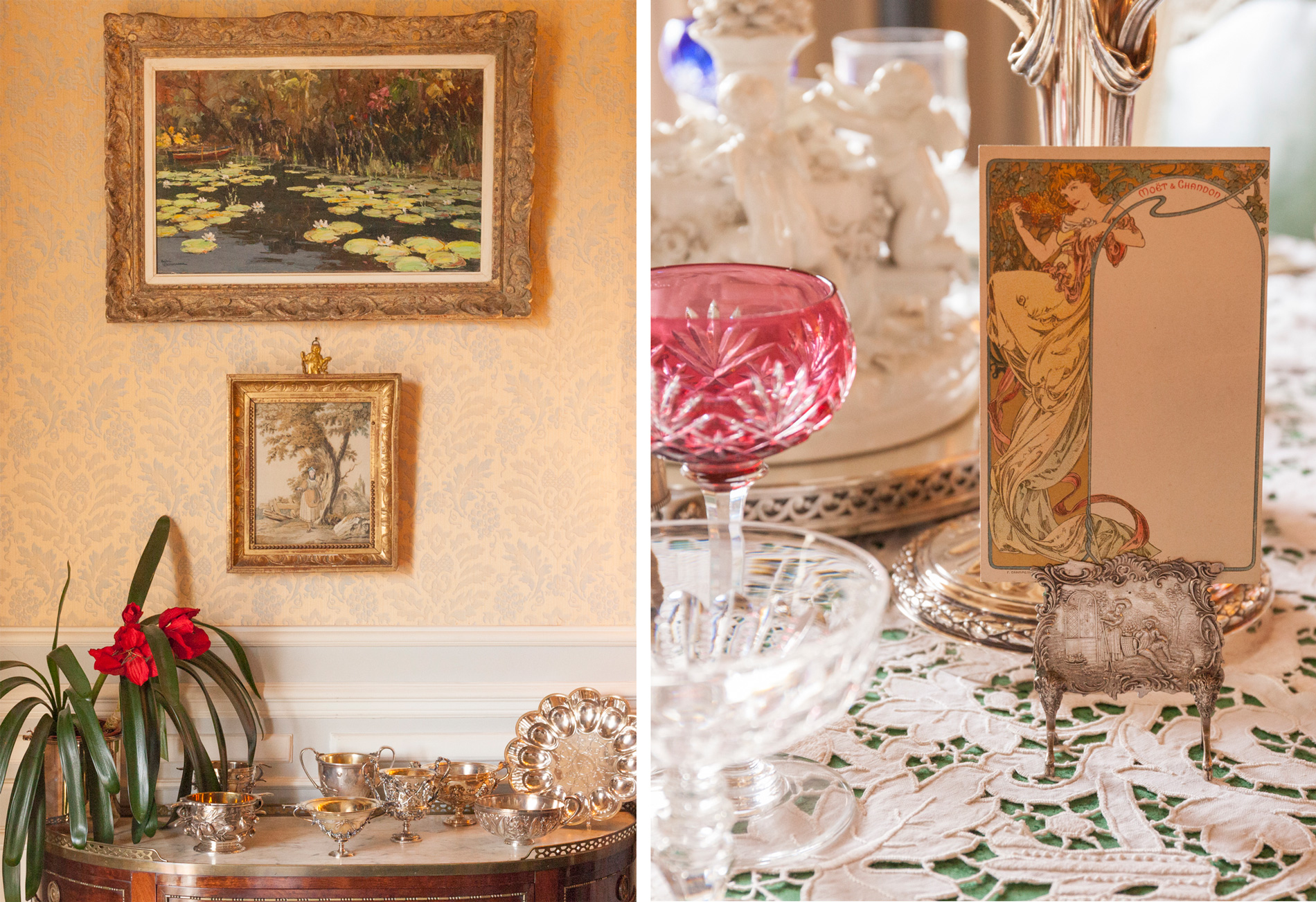
JP is a Paris-based designer and an experienced collector who has been collecting ancient silverware for almost 40 years. One of our staffs in Licorne Unique became friends with him and found out that he is a man of noble origin. His mother’s family were Imperial Russian aristocrats who fled to France soon after the Russian revolution. He was born in Île Saint-Louis, located in the middle of Paris. When JP was little, his family lived next to Mr. Pompidou, the president of France. Up to now, Île Saint-Louis is still one of the most distinguished places in Paris, the home to many aristocrats and people of influence.
Today, JP lives in a Haussmann style apartment in Paris he designed and decorated. His love for silverwares can be seen everywhere in his home: The door knobs and the window handles are antique silverwares; the design of relief-sculptures on the walls is based on the style of Louis XVI; and the ceiling used to be the painted stained glass ceiling of a bakery in the 1900s. He told us that he have bought this glass ceiling for around a decade before he moved into this apartment. In fact, one of the reason that he bought this apartment was its compatible size to install the stained glass ceiling.
His home is also full of all kinds of artworks besides silverwares, including painting and sculptures. He always says that the purpose of collecting antiques is definitely not to lock them up into closets, but to let them participate to our daily life.

Q:How long have you been collecting? And why do you collect silverwares?
A:In my memory, I began to be interested in antique since childhood. I enjoyed what we had at the house, and asked a lots of questions, my mother can proofed for that. I started to buy antiques as gifts for birthday and Mother’s day: a small jewelry box or a set of coffee spoon…… It’s at my 15, when I really start up my antiquary collection: I collected many antique boxes, some silverware, some gilded, wood, leather……and some antique leather-bound books.
I am a fan of table setting. Whenever we were holding parties and feasts at home, I would asked to join for decorating the dinning table. Those laced table runner, slivered tablewares, crystal wine glasses, porcelains, and flowers freshly picked from garden centering at the table, brought in a festive sense.
It’s not until I began studying architecture at Versailles, that I really began to collect tablewares and gold & silverware. I often invited friends to my little apartment, and hosted them with my cuisines. At Versailles, I was studying everything about the arts in this palace, 17th and 18th century art basically, and taking evening lectures at Louvre.
As a student, I recreated the classical aura in my life within limited budget. I like to organize dancing parties, and handwrite all my invitations in ancient front. We lit up candelabra at MarlyPark, and had picnic alongside with 17th century music.
My love of silverwares originates from fascination on the art of table setting. Another reason may be, even when I was little, the Palace of Versailles had imposed an irresistible charm on me. These furnitures commissioned by the King Louis XIV, were then ordered to melted down for war financial demand: tree-pot, console table, large candelabras, sliver throne, not even to mention those gilded plates, pots, water bottles, etc. These most notable gold & sliver-smiths are real artists, the art they made are highly celebrated around the world. These arts were demolished, due to their precious material, such an irretrievable lost. Since just after, gilded wood furniture was popularized, and first appeared at the Hall of Mirror and King’s chamber.
"On the other hand, table silverware could be used frequently, and personally I am more willing to use them than to lock them up in closet. They are made for the art of life."

JP loves table setting. His diverse collection of silverware, including cutley dating back 100 years ago, would be used constantly.
Q: When you encounter a silverware, what aspects of it attracts you the most such that you want to own it? Do you only collect French silverwares?
A: The several aspects of a silverware that attract me: Its perfect ratio and an excellent marriage of its casting and engraving with its artistic style. Ever since the Neo-expressionism movement, the interpretation of contemporary fashion and the artistic expression becomes essential. Besides that, I would also consider the artists’ sensitivity and craftsmen’s professional skills. We often have deeper impression of that based on our own interpretation. I personally appreciate Thomas Germain from the 18th century and Christofle from the 19th century. Christofle was an accomplished artist as well as engineer, as he integrated them to such a level that no-one has ever been. Let’s not forget about Jean Puiforcat, he eloquently depicted the art of 20th century through his silverware.
I mainly collect French gold-wares and silverwares, but I am also highly sensitive to British works of high qualities. There are excellent goldsmiths in Britain with comparable abilities to the ones in France. However, the mass-produced and exported silverwares can hardly be of top qualities.
In addition, because of the influence of my family, I am also deeply attracted to the silverwares and enamel inlay from Imperial Russia. All of the works by Fabergé, the master jewelry designer and goldsmith are impressive. In fact, the House of Fabergé was the first to move from France to Russia.
Q:What do you consider as silverware connoisseurship? Does your opinion change as your collection enlarge?
A:Both the connoisseur and collections are developing at the same time. At the beginning, what he know is little, and have a small collection. At this time it’s easy for him to find something he never seen before unique. However, as he continue to discover, to research, to collect and to communicate with other collectors and dealers, he will learn the real value of each object, and cultivate his own taste. There’s some of them more frequent seen and cheaper, some very rare and precious; a good collection should include both kinds.
Q:Since you had designed your own apartment, can we know what drives your decisions in designing the space? And how do you think of the relationship between life and living space?
A:Interior design is depended on the living style of the host, the construction of a house and many other elements. My apartment is styled in a Neo-Ottoman current in 1900, but as I preferred, I modified it into a Louis XVI style, for me this is the most epic moment of art.
I also displace a several of 20th century furnitures and modern paintings, that points to the time I’m living in. Overall, I wish to enjoy the delicate and elegant world in the past days, while fitting in the conveniency and technological advancement of modernity.

JP's apartment is filled with art and antiques
Q:Do you ever use your collection? Like using silverwares for a particular event?
A:Part of the collections are not for practical usage, they are merely showpiece or decoration. For example, I owned a collection of 18th and 19th century box and snuffbox, and a section of 19th century replica of ancient Rome Mariendom treasure. These Roman time treasure reappeared in 1868, 70 of them are now housed at Berlin Pergamon Museum. At the time, only Christofle was legitimate to make reproduction of these ancient silverwares, and I was lucky to own part of them. These kind of arts are more for exhibition and appreciation.
On the other hand, table silverware could be used frequently, and personally I am more willing to use them than to lock them up in closet. They are made for the art of life. Living in a digital era, I adore the art of life even more: no matter it’s on the table, teatime, or clothing.
Q:Would you please give some advice for beginners who are interested in collecting French silverware?
A:If one would like to become a silverware collector, first of all, one must have the sensitivity, a feeling. We collect not for financial payback, but for love. If one have the passion, the taste, and willingness to research, you might end up with surprising reward. For me it’s the same, because 19th and 20th century silverware are being undervalued. However, the happiness coming from collecting is more important, it’s the joy of entering a new realm, divorced from the imposing reality of formality, and being able to connect with the world of culture, art and pleasure of living that our ancestors enjoyed.
Photograph © Licorne Unique. All rights reserved.

